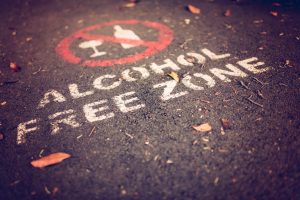by Sher Delva | May 22, 2017 | Addiction, Addiction Medicine, Addiction Stigma, Mental Health, Stigma, Therapy, Uncategorized, Withdrawal

A recent article in Psychology Today explores the topic of chronic stress and how stress can increase vulnerability to addiction.
Have you dealt with a lot of stress lately? If so, it might be time to take care of it. Stress is a major risk factor in addiction recovery. Stress may increase the chance of a relapse. Stress is a normal part of everyday life and while it may not be possible to eliminate stress completely, there are ways to manage it better.
What is Stress?
Most of us have been stressed before, but how exactly do you define stress? Stress is defined as adversity or hardship that a person experiences. Biologically speaking, stress causes a rise in our blood levels and increases stress hormones, like cortisol. Fight-or-flight is the normal response to stress. In this state, all the blood goes to the muscles so that you are ready to take off when necessary.
There is a difference between chronic and normal stress. Moderate stressors in life are perceived to be pleasant. In fact, some people love a challenging stressful situation that promotes the release of stress hormones. However, intense and prolonged stress due to unfortunate situations can produce feelings of helplessness and depression.
Chronic stress increases the risk for developing:
- Depression
- The Common Cold
- Influenza
- Tension Headaches
- Clenching of the Jaw
- Teeth Grinding
- Tension of neck and shoulders
Stress stems from a multitude of sources. Trauma in early childhood can make people more vulnerable to stress later in life. There are studies that suggest stress in early life can cause methylation of key genes that control the stress system When this happens, we remain in a constant state of emergency.
The workplace is another environment prone to chronic stress.
If your job is very demanding, stress is a likely result. On the same note, those who feel unappreciated at work or unimportant are susceptible to developing clinical anxiety and depression, as well as stress-related medical conditions like ulcers and diabetes.
For some, a common remedy is abusing addictive substances. Research in human studies reveals that adversity during childhood and early life can increase the risk for addiction. Furthermore, people with an unhappy marriage, dissatisfaction with employment or harassment also report increased rates of addiction.
The more stressors a person is exposed to, the greater risk of substance abuse. Economist Deaton (2015) shows that less educated white Americans who struggle in the job market during early adulthood are more likely to experience “cumulative disadvantage” over time, with health and personal problems that lead to drug overdoses, alcohol-related liver disease, and suicide.
Why is this?
One explanation is the self-medication theory. This theory suggests that a person uses drugs to cope with stressors or relieve themselves of anxiety and depression resulting from a traumatic event. Thus, drug use acts as a mean to soothe the psychological distress.
High emotional stress is linked to loss of impulse control and an inability to delay gratification. Chronic stress decreases gray matter volume in the brain. This area is associated with cognitive control and stress regulation.
Essentially, stressed people are prone to give into their impulses as a way of coping with daily stress. In sum, people who are more stressed lack the ability to make rational decisions.
In conclusion, learning to manage stress is crucial to success in recovery. if you are struggling, reach out for help. There are a variety of treatment options available to manage stress. We are a phone call away. Please take care of your health. Call now.
CALL NOW 1-888-922-5398
by Sher Delva | May 22, 2017 | Addiction, Addiction Medicine, Addiction Stigma, Mental Health, Stigma, Therapy, Uncategorized

A needle exchange program in the Bronx, New York is stepping up to combat the ongoing opioid crisis and rising overdose death rates. Their latest tactic is handing out fentanyl test strips to heroin users.
The reasoning behind the test strips is to lower overdoses due to fentanyl-laced heroin.
Staff member Van Asher explains that the test strips will help addicts determine whether or not there is fentanyl is the drugs they’re using. The strips are usually used to drug test urine, but people can put a little of the mixture that’s in their syringe onto the strip to test whether or not what they are injecting contains fentanyl. This will help them make a more informed decision about what they are putting in their bodies, Asher explained to NPR.
Studies conducted by the Centers For Disease Control and Prevention revealed that most people do not know whether the heroin they’re using contains fentanyl. Asher told NPR that he started handing the strips out of desperation to curb the overdose rates among his clientele.
With each strip, Asher gives a survey to fill and report back. Unfortunately, Ashley admits getting clients to follow through is a difficult task.
Still, Asher is now working with programs around the country to try to replicate his idea. The idea originated at Inside in Vancouver Canada, North America’s only safe injection facility.
However, the major difference is that if someone is choosing to use their fentanyl-laced heroin at Inside, they can be medically monitored and an overdose is more likely to be reversed by staff, preventing death.
In the United States, safe injection facilities do not exist yet. While there are few areas testing the concept, none have yet to become established. Furthermore, harm reduction strategies remain a controversial topic. Therefore, it is up to the drug user to monitor how they use the drugs.
Some simply are not convinced.
Drug users like Vincente Estema explain that knowing there is fentanyl in his heroin is not going to stop him from using.
“It’s stronger! If it makes me feel the euphoria, I’m going to go for it,” he told NPR.
When an addict is at the point of wanting to use drugs, it is unlikely that the fentanyl test strips would deter them from using. However, it would at least inform them of the risk they are taking, and could potentially reduce the amount of the drug they take.
In 2015, the spike in fentanyl-laced overdose deaths led the Drug Enforcement Administration to issue a nationwide warning about the drug.
“Drug incidents and overdoses related to fentanyl are occurring at an alarming rate,” said DEA Administrator at the time, Michele Leonhart, calling it a “significant threat to public health and safety.”
During a three-month period in 2016, 74% of opioid overdoses in Massachusetts were caused by fentanyl! Fentanyl is up to 100 times stronger than morphine and is the strongest opioid available to doctors; even worse, different variations of fentanyl are hitting the streets like carfentanil and acryl fentanyl.
The numbers from Massachusetts indicate that heroin overdoses are dropping, but opioid-related overdose deaths continue to increase. Authorities agree that fentanyl is to blame. In a press release, Massachusetts Secretary of Health and Human Services Marylou Sudders called the data, “a sobering reminder of why the opioid crisis is so complex.”
Do you believe these strips could help combat the opioid epidemic? Would it affect how an addict uses? Regardless, any addict continues to use needs to seek help instead. The next time you use could be your last. Recovery is possible. We want to help you. Call now.
CALL NOW 1-888-922-5398
by Sher Delva | May 4, 2017 | Addiction, Addiction Medicine, Addiction Stigma, Addiction Treatment, Stigma

These days, it is harder to name celebrities who aren’t sober than those who are. After all, we hear reports daily on newly sober celebs. Whether it’s Daniel Radcliffe or Bam Margera, the list of celebrities who are sober continues to expand.
Now, leading man Brad Pitt revealed in an interview with GQ magazine that he has quit drinking and is living sober. Brad Pitt says he is six months sober and is looking forward to continuing his sobriety for the long-haul.
According to Pitt, his divorce from actress and producer Angelina Jolie was due partly to his out-of-control drinking behavior. Pitt admits that the past six months of his life has been a “weird” time, according to the interview, and he looks forward to regaining his life back.
“Personally, I can’t remember a day since I got out of college when I wasn’t boozing or had a spliff, or something. Something. And you realize that a lot of it is, um—cigarettes, you know, pacifiers. And I’m running from feelings. I’m really, really happy to be done with all of that,” he says.
During Pitt’s divorce from Angelina Jolie, his drinking and drug use got the full media scrutiny. Jolie said her reason for the divorce was “for the health of the family” which may have alluded to Pitt’s struggles with substance use. Now, with this recent interview, it is apparent substance use played a major role.
“I was boozing too much. It’s just become a problem,” he admits. “And I’m really happy it’s been half a year now, which is bittersweet, but I’ve got my feelings in my fingertips again. I think that’s part of the human challenge: You either deny them all of your life or you answer them and evolve.”
From the interview, Brad Pitt confirms a commonality about addiction: it doesn’t happen overnight. In most cases, people drink and use for years, and the destruction continues to build months, years and decades down the road. Substance use creates problems for more than just the addict. It can destroy families, friendships, and careers too.
Celebrities like Brad Pitt, Ben Affleck, Bam Margera, Stephen Moyer and Alex Baldwin have all gone public with their recovery. With each admission, the stigma of addiction decreases. Many have a perception of what it looks like to be an addict. However, addiction does not discriminate. It can affect anyone.
When it comes to celebrities, often having too much power and success can lead to their downfall.
Pitt himself has said, “Success is a beast. And it actually puts the emphasis on the wrong thing. You get away with more instead of looking within.”
Furthermore, Brad Pitt says he is now looking within and learning more about himself. He sees a therapist regularly and is refocusing his family.
“For me this period has really been about looking at my weaknesses and failures and owning my side of the street,” Pitt said. “For me every misstep has been a step toward epiphany, understanding, some kind of joy. Yeah, the avoidance of pain is a real mistake. It’s the real missing out on life. It’s those very things that shape us, those very things that offer growth, that make the world a better place, oddly enough, ironically. That make us better.”
These days, Pitt says he enjoys his cranberry and fizzy water drinks. He admits that it is challenging to give up wine completely, but he “does not want to live that way anymore.”
“I mean, we have a winery. I enjoy wine very, very much, but I just ran it to the ground. I had to step away for a minute,” He says.
More and more celebrities are choosing sobriety. If they can do it so can you. Do not feel ashamed of where your addiction has led you. Instead, choose to live a life of sobriety. We can help you get back on track. Call now.
CALL NOW 1-888-922-5398
by staff | Apr 12, 2016 | Anxiety Disorder, Mental Health, Mood Disorders, Panic Disorder, Stigma, Therapy

If there are any other nerds out there like me, you may have come across an abstract animated series called Psycho-pass that rose in popularity a few years back in 2012. The show’s name fits firmly into the primary premise of the show, an authoritarian future dystopia, where omnipresent public sensors ceaselessly scan the mental states of every passing citizen. In the TV show, collected data on both present mentality and aggregated personality data is used to gauge the probability of an individual committing a crime, the rating referred to as that citizen’s Psycho-Pass. Law enforcement and public security utilizes technology tracking mental health of citizens in order to premeditate possible threats. The characters chase criminals who the system deems emotionally or psychologically at risk, and the show adds a few good twists of suspense and philosophical paradox.
Needless to say, I am a big fan of the series.
So of course, seeing a headline explaining a new research project that could make this kind of system a reality, it stirs up some curiosity. This abstract concept of machines reading the psychological profiles of everyday people as a security measure has jumped right out of the world of sci-fi fantasy and could soon be another innovation that changes our world.
Could a mental health security system be the future of public safety?





